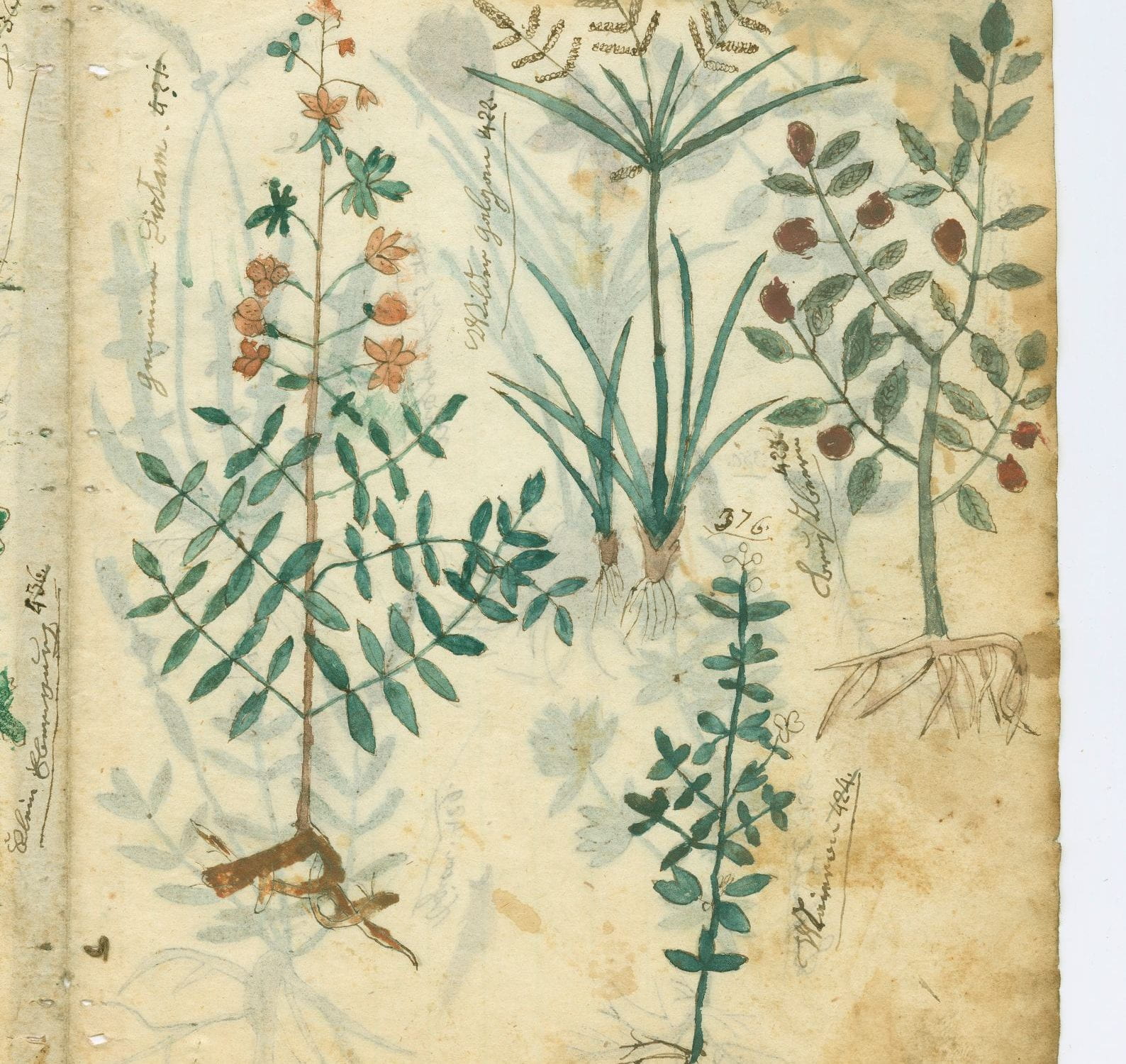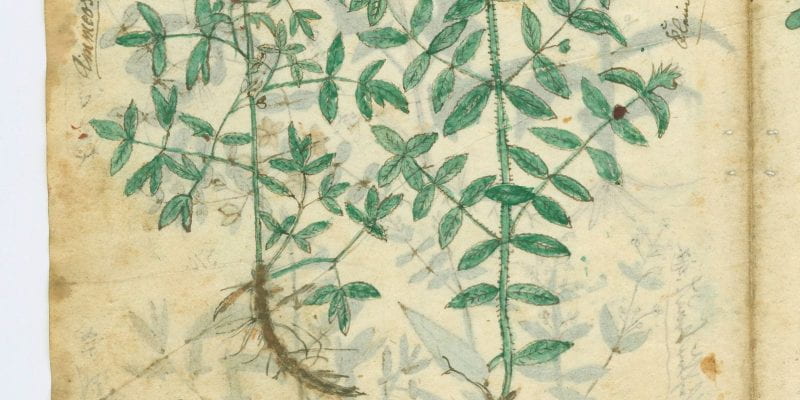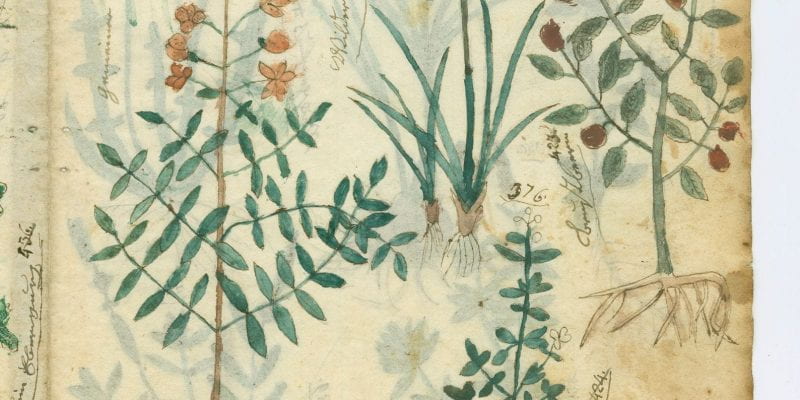The Virtues of Plants
Very little is known about this striking manuscript compiled by Philipp Lindemann in Stark County, Ohio in the mid-19th century. The 432 watercolor drawings of herbs and plants, many used for medicinal purposes, are followed by handwritten descriptions of the plants in German. Manuscript and printed herbals are some of the oldest books in existence, dating back to the Medieval Ages and the Renaissance, and span different cultures, languages, and regions. They are scientific observation and artistic expression combined, and each one offers a unique visual take on the rich biodiversity of the plant kingdom. The first herbal written and printed in America, though not illustrated, was by Johann Christoph Sauer, who compiled and edited Kurzgefasstes Kräuter-Buch (The Compendious Herbal) in serialized form between 1762-1778 for Pennsylvania German families to source their own herbal medicines. Like the Seaweeds album also on view, herbals can be important historical sources for studying the biodiversity of plants in different regions throughout the world.
Philipp Lindemann
Herbal manuscript,, circa 1835-1867
Purchased with the generous financial assistance of the Max Kade German-American Research Institute, from the Roughwood Collection, 2004
CO2 PPM, 1835-1867: 283.9-286.8
Additional Information
The Biodiversity Heritage Library has many digitized early herbals freely accessible here: https://www.biodiversitylibrary.org/subject/Herbals#/titles


